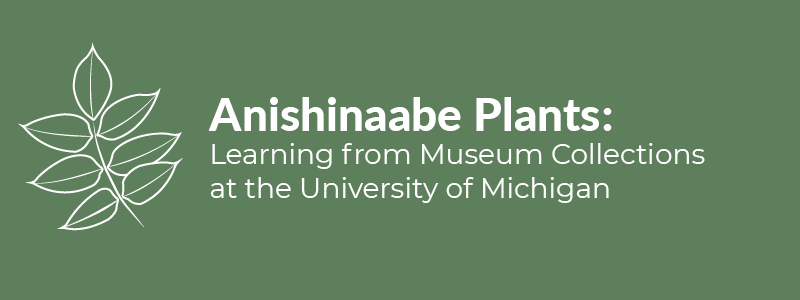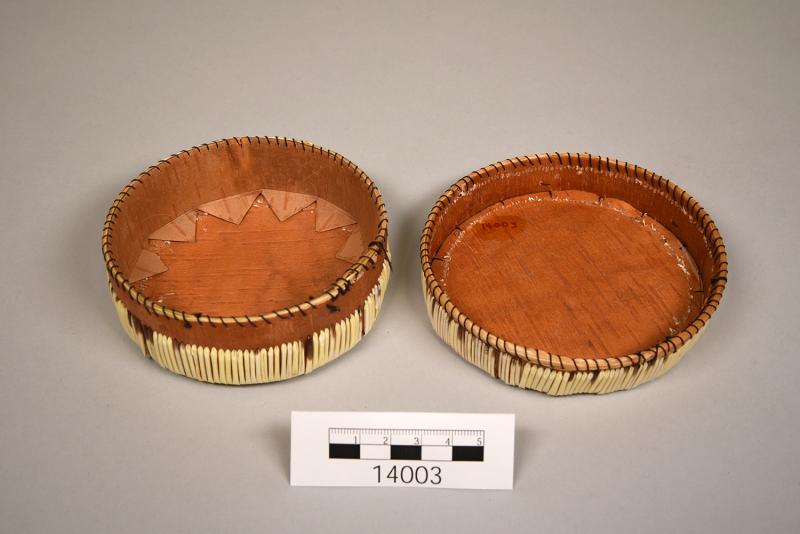Birch Bark Containers
Two women from the Garden River community showed Jones how they made different types of containers from birch bark. Margaret Savoir made folded containers used to collect maple sap. Mrs. William Jo Bell demonstrated how she made a box with a lid and how she decorated it with porcupine quills.
Birch Bark Containers
Mr. Bill Seuliar suggested that Jones contact Mrs. Margaret Savoir and ask her to show him how she made birch bark containers to collect sap.
Mrs. Savoir had sheets of birch bark she had at her house to make two containers for Jones. She started by stripping off the rough sectons of the bark by hand and trimming the edges with scissors. To make the bark more pliable, she built a fire in her wood burning stove. When it had heated up, she placed a sheet of bark on the stove top and pressed it down with her hand for about a minute. She then turned it over and heated the other side.
She put the sheets of bark on her lap with the inside of the bark facing downward. She bent and folded each end to create sides, pressing on the creases to set the fold. She used an awl to punch holes in the folds. Fresh basswood fiber were put through the holes and tied.
Mrs. Savoir told Jones that if all the materials were on hand and the stove was ready, she could make one of these containers in about ten minutes. She said that she used to earn cash by selling these types of contains to people in the community who made maple sugar.
Quill Box
Jones hired Mrs. William Jo Bell to make a quill box. She used two specially made tool to make the box: an awl made out of a darning needle with a handle and tweezers made by a blacksmith from barrel hoops. She told Jones that birch bark was easiest to collect when the tree's sap was flowing. In the Garden River area, the best time of year was June and early July. Jones visited Garden River in August and did not have the opportunity to watch anyone harvest birch bark.
Mrs. Bell had completed the lid by the time Jones arrived. He watched her cut and sew together pieces of the main part of the box. For the base, she cut two pieces of the same size, put the rough sides together, and then tacted them with large stitches that were then removed after the box was complete. She cut a strip of bark and attached it to the bottom with brown thread. For the stiches on the top of the box, she preferred white thread but had run out.
She used porcupine quills that she purchased from hunters to decorate the box. She said that the quills were easiest to removed from the animal when it was still warm and could be removed by hand. The best time of year for getting quills was from October until the porcupine shed its quills in the spring.
Jones commented on the effort and care that went into sorting the quills. Mrs. Bell used the brown of the quills to make the animal design and white quills for the background and the sides. She used quills that were dyed green with commercial dyes for the leaves.
Before attaching the quills, Mrs. Bell soaked them in water for about 10 minutes. She used her awl to make sets of holes and threaded the quills through the them, using the tweezers to pull the quills flush to the outside surface. Once she had completed the design, she cut the quills off from the inside with a razor and attached another piece of birch bark on the inside as a facing. She sewed sweetgrass to the edge of the lid.
Jones estimated that it took Mrs. Bell about five hours to make this quill box.



